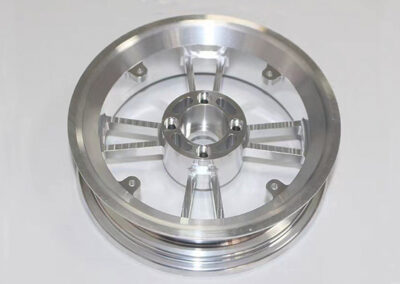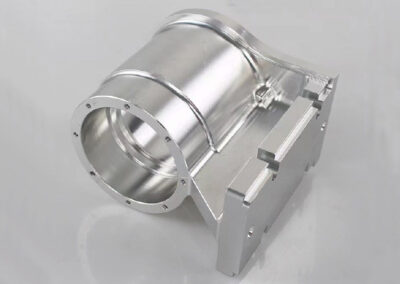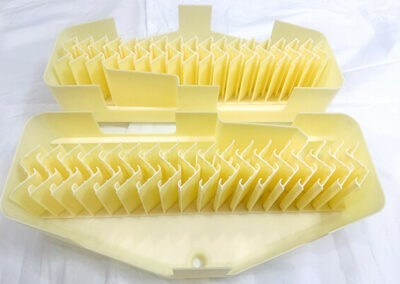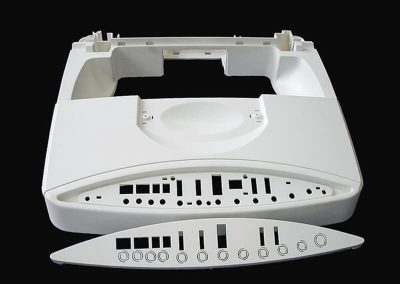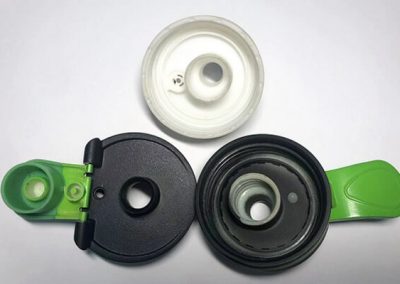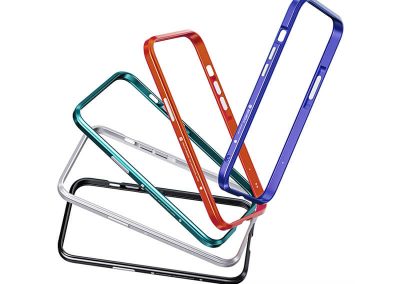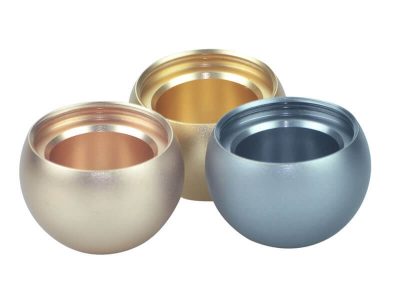CNC Methods: How to Manufacture CNC Machined Parts
Numerous innovative manufacturing technologies continue to emerge, CNC methods remains unparalleled in terms of reliability and efficiency. These common CNC methods create precision parts and rapid prototypes across various substrates.
CNC methods is not only benefit from the rapid development of automation, but also can produce manual machining can not be completed with a complex shape of the parts.
CNC methods can make production process of stable quality, high machining accuracy, high repeatability, adapted to the specific processing requirements. When CNC methods used in the case of multi-species, small batch production production is more efficient, can reduce the production preparation, machine tool adjustments and the process of inspection time, and due to the use of the optimal amount of cutting and reducing the Cutting time.
Sungplastic masters some CNC methods for the production of machined parts or prototypes, let’s learn and discuss together,
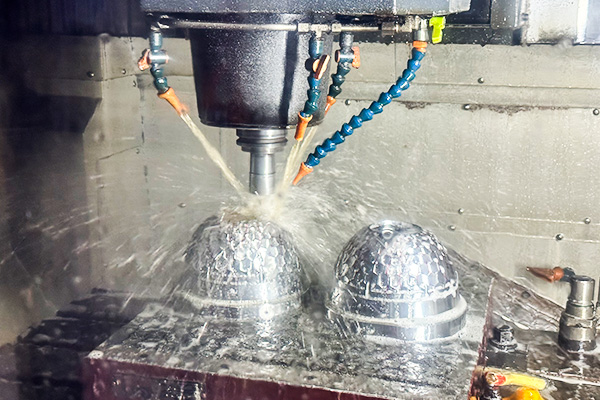
Turning
The foundational operation of turning involves securing a workpiece onto a rotating plate or mandrel. As the workpiece rotates, a cutting tool engages it in a fixture mounted on a movable slide, enabling precise material removal. Lathes, the primary machines for turning, create concentric shapes, slots, ring grooves, stepped shoulders, threads, and more, ensuring smooth and uniform surface finishes.
Milling
Milling diverges from turning by holding the workpiece stationary while the cutting tool rotates on a spindle. Typically, the workpiece is secured horizontally in a machine vise on a table that moves along the X and Y axes, while the spindle moves in the X, Y, and Z directions. Mills excel at stock removal from complex and asymmetrical parts, producing square/flat faces, notches, chamfers, channels, profiles, and keyways with precision.
Surface Grinding
Achieving exceptional flatness on metal parts by CNC methods is crucial in many applications, and surface grinding is the optimal method. A spinning disk coated with specific-coarseness abrasive grit creates a precise surface. The workpiece, mounted on a table, moves laterally beneath the abrasive wheel or remains stationary as the wheel moves. Care is taken to control tool speed and temperature due to the heat and mechanical stress involved.
Solid Sink EDM
Also known as Die-Sinker EDM or Ram EDM. This process employs a conductive electrode submerged in dielectric fluid, positioned close to the workpiece. The electrode’s shape corresponds precisely to the desired feature. As the electrode discharges, it forces metal particles off the workpiece’s surface. Solid Sink EDM is used for making pockets, holes, and square features in hardened tool steels that are challenging to create otherwise.
Wire EDM
Wire EDM relies on a copper wire conductor subjected to a high-voltage electric charge. A continuous feed of fresh wire from a spool steadily erodes the conductor during the cutting process. Wire EDM is suited for thick, hardened tool steel, facilitating the creation of circular or semi-circular features difficult to achieve with conventional tools.
Wire EDM is particularly suitable for creating complex shapes, intricate contours, and features with tight tolerances, especially in materials that are difficult to machine with traditional CNC methods.
Cylindrical Grinding
Combining surface grinding and lathe turning, cylindrical grinding involves holding the workpiece steady while a cylindrical grinding wheel rotates against its surface. It is one of CNC methods used for inside and outside diameters, achieving precise tolerances and a remarkably smooth surface texture.
Optical Grinding
CNC machining extends beyond metals to create specialized optics in glass or plastic. This necessitates precise surfaces and tight tolerances. Specialized grinding equipment utilizes multi-axis rotation to average out deviations from the nominal, ensuring exceptional precision and surface quality. Grinding paste is employed as both a lubricant and to achieve a polished finish.
Electron Beam Machining (EBM)
Electron Beam Machining utilizes a high-velocity electron beam generated in a vacuum to remove material from the workpiece. The focused electron beam’s high energy density enables precise and deep machining. EBM is often used for drilling, cutting, and welding applications in aerospace, automotive, and semiconductor industries.
Waterjet Cutting
Waterjet cutting relies on a high-pressure stream of water mixed with abrasive particles. The abrasive waterjet can cut through a wide range of materials, including metals, ceramics, glass, and composites. Waterjet cutting is known for its versatility and is often used for intricate and detailed cuts, as it produces minimal heat-affected zones.
Plasma Cutting
Plasma cutting employs a high-temperature, ionized gas (plasma) to melt and remove metal material. It is particularly effective for cutting thick metals and is widely used in industries such as construction, shipbuilding, and metal fabrication.
Ultrasonic Machining
Ultrasonic Machining involves the use of high-frequency vibrations transmitted to a tool, along with an abrasive slurry. These vibrations, typically ultrasonic frequencies, create abrasive action that removes material from the workpiece. It is often applied to hard and brittle materials, making it suitable for precision machining of ceramics, glass, and advanced composites.
Chemical Machining
Chemical machining, also known as chemical milling, uses chemical etchants to selectively remove material from the workpiece. It is especially useful for producing complex and lightweight structures in aerospace and automotive components. Chemical machining is often employed in the manufacturing of aircraft and spacecraft components.
Electrochemical Machining (ECM)
Electrochemical Machining utilizes electrochemical processes to dissolve and remove material from the workpiece. It is employed for machining complex shapes, including those with internal cavities, and is ideal for heat-sensitive materials and superalloys. ECM is commonly used in the aerospace and medical industries.
Abrasive Flow Machining (AFM)
Abrasive Flow Machining employs a viscous abrasive media that flows through the workpiece, effectively removing material. It is used for deburring, polishing, and radiusing edges, particularly in applications where traditional machining CNC methods may be impractical. AFM is used in industries such as aerospace, automotive, and medical device manufacturing.
Laser Machining
Laser Machining utilizes a high-energy laser beam to precisely cut, engrave, or mark materials. It offers high precision, minimal heat-affected zones, and is suitable for a wide range of materials, including metals, plastics, and ceramics. Industries such as electronics, aerospace, and medical device manufacturing often rely on laser machining and other CNC methods for intricate work.
Gun Drilling
Gun Drilling is a specialized drilling process used to create deep, straight holes with high aspect ratios. It is employed in industries where deep holes are required, such as firearm manufacturing, aerospace, and oil drilling equipment.
Broaching
Broaching is one of CNC methods that employs a broach—a tool with multiple cutting edges—to remove material in a controlled manner. It is frequently used for producing keyways, splines, and other internal shapes in components like gears, hydraulic valves, and automotive parts.
Sungplastic’s CNC Machining Service for Your Vital Projects
These CNC methods offer diverse capabilities and are applied in various industries, contributing to the precision and efficiency of manufacturing processes. The choice of CNC methods depends on the specific requirements of the project, including material properties, tolerance levels, and the desired surface finish.
At Sungplastic, CNC machining service can greatly reduce the number of fixtures, processing complex shape parts that do not need complex fixtures. If you want to change the shape and size of the parts, you only need to modify the parts machining program, suitable for new product development and restyling.
Whether you need large part machining, high volume production, rapid prototyping, precision machining, the CNC methods we have at our disposal will meet your needs. We have experienced engineers and technicians, advanced technical equipment, perfect production lines, as well as docking competitive price advantage of raw material suppliers, to ensure production quality quality and on-time delivery.
If you need custom parts, please contact us directly to request a quotation today.
CNC Machined Parts Made by Sungplastic
Since 2002, we have provided high-quality CNC machining services to a wide range of industries. CNC machined parts include metal parts, plastic parts, etc. Common metal materials include aluminum, aluminum alloy, steel, stainless steel, copper, etc. Plastic materials include ABS, PP, PC, nylon, acrylic, POM, etc. In our product library you can see hundreds of different projects.
Get a free quote and design analysis today.
We’ll reply to you within 6 working hours.
We respect your privacy.
+86 139 2927 4777 (WhatsApp, Wechat)

